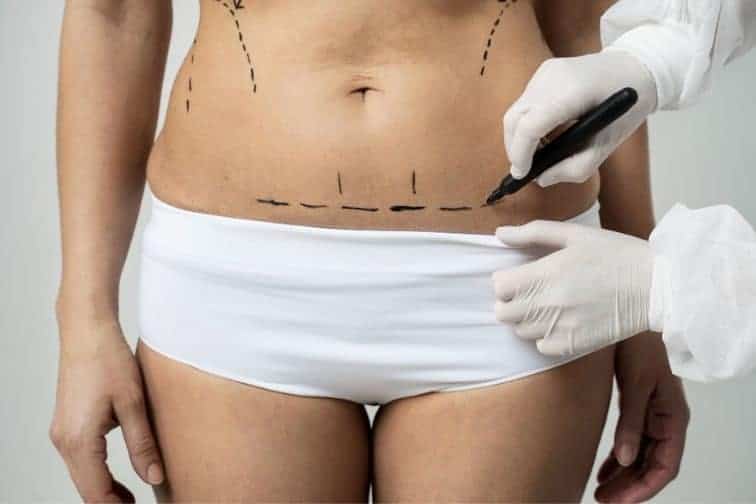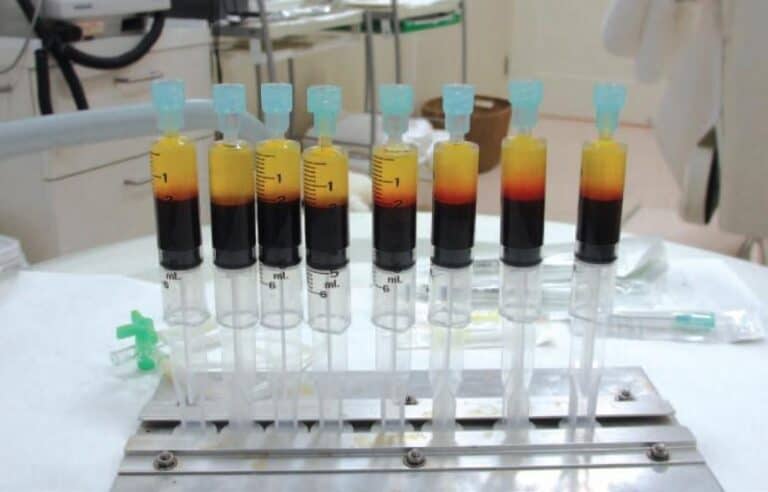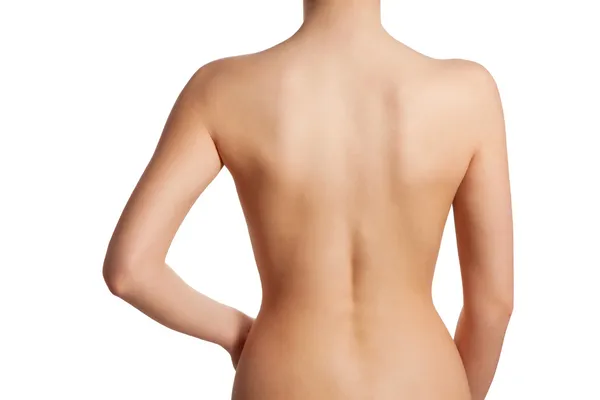Liposuction vs Tummy Tuck: Which is Right for You?
Did you know that over 250,000 liposuction and tummy tuck procedures to remove unwanted fat and fatty tissue are performed each year in the U.S. for many patients? If you’re considering body contouring, understanding the differences between liposuction vs tummy tuck, including unwanted fat, fatty tissue, incision, and abdominal skin, is crucial. Liposuction targets fat removal, while a tummy tuck tightens skin and muscles in the midsection, with key differences in the incision and effects on the upper abdomen. Both have their benefits and risks.
Choosing the right procedure depends on your goals. Liposuction is ideal for removing stubborn fat pockets. A tummy tuck with lipo is better for loose skin, unwanted fat, and muscle repair in the midsection and abdominal wall. Knowing these distinctions can help you make an informed decision about treatment for your back and midsection, making you a good candidate. In this post, we’ll dive deeper into what each procedure entails, recovery times, and potential outcomes to guide you through your body transformation journey, including treatment for the back and abdominal wall.
Understanding Body Contouring
Definition
Body contouring helps enhance body shape. It is common after weight loss or pregnancy. The goal of the treatment is to achieve a smoother and more toned appearance of the back and abdominal wall.
Addressing Excess Skin
Body contouring targets excess skin and fat. One popular treatment method is abdominoplasty, also known as a tummy tuck. This surgery removes extra skin and tightens muscles.
Surgical Treatments
Abdominoplasty isn’t the only option. Liposuction is another common procedure. It focuses on removing fat deposits but doesn’t address loose skin treatment.
Importance for Weight Loss
Significant weight loss can lead to permanent loose skin. Body contouring helps individuals deal with this issue. It improves aesthetic goals by making the body look firmer through treatment.
Skin Tone Considerations
Skin tone affects the outcome of body contouring. Darker skin tones may have different healing patterns. Surgeons consider these factors when planning procedures.
Real-Life Examples
Many people seek body contouring treatment after losing a lot of weight. For instance, someone who lost 100 pounds might need treatment for sagging skin. A tummy tuck can help them feel more comfortable in their own skin.
Liposuction Explained
Procedure Details
Liposuction, also known as lipo, is a surgical procedure. It focuses on removing excess fat from specific body parts. Surgeons use a thin tube called a cannula to suction out fat deposits. This process targets areas like the abdomen, thighs, and arms.
The procedure does not address skin laxity. Patients with loose skin may need additional treatments. Liposuction is ideal for those who want to refine their body contours.
Suitability for Patients
Liposuction suits individuals looking to reshape their bodies. It helps remove stubborn fat that resists diet and exercise. This procedure is not a weight loss solution. Instead, it targets specific areas with fatty tissue.
Patients should have good skin elasticity. This ensures the skin can contract after fat removal. Those with significant loose skin might consider other procedures.
Recovery Process
Recovery from liposuction varies by individual. Most patients experience swelling and bruising. These symptoms usually subside within a few weeks. Full recovery can take several months.
Doctors recommend wearing compression garments. These help reduce swelling and support healing. Light activities can resume within a few days, but strenuous activities should be avoided for several weeks.
Expected Outcomes
Liposuction results in more refined body contours. Patients often see improvements in their shape and proportion. The procedure removes excess fat permanently, but maintaining results requires a healthy lifestyle.
Liposuction does not remove excess skin. Patients should have realistic expectations about what the surgery can achieve. It’s essential to understand its limitations regarding skin removal.
Tummy Tuck Unveiled
Abdominoplasty Procedure
A tummy tuck, or abdominoplasty, is a surgical procedure. It removes excess skin and fat from the abdominal area. Surgeons often recommend it for those with loose or sagging skin.
The surgery involves an incision made from hip to hip. The surgeon then removes the excess skin and tightens the abdominal wall. This creates a firmer and smoother midsection.
Muscle Tightening Benefits
One key benefit of a tummy tuck is muscle tightening. During the procedure, surgeons repair separated or weakened abdominal muscles. This results in a stronger core and improved posture.
Patients often notice a significant change in their abdominal profile. Muscle tightening can also alleviate back pain caused by poor posture.
Recovery Time
Recovery from a tummy tuck is longer compared to liposuction. Patients typically need about two weeks off work. Full recovery can take several months.
During recovery, patients must avoid strenuous activities. They may experience swelling, bruising, and discomfort. Following post-operative instructions is crucial for optimal healing.
Skin Elasticity Considerations
A tummy tuck is ideal for individuals with poor skin elasticity. Liposuction alone cannot address loose or sagging skin. By removing excess abdominal skin, a tummy tuck provides better results for these patients.
Stretch marks on the lower abdomen can also be removed during the procedure. This offers an added aesthetic benefit.

Belly Button Repositioning
In many cases, the belly button needs repositioning during a tummy tuck. This ensures a natural look after excess skin removal. The surgeon creates a new opening for the belly button in the tightened skin.
Proper positioning of the belly button is crucial for a balanced appearance.
Comparing Procedures
Liposuction targets fat removal but does not address loose skin or muscle separation. A tummy tuck addresses multiple concerns at once:
- Excess skin removal
- Muscle tightening
- Stretch mark reduction
Choosing between liposuction and a tummy tuck depends on individual goals and conditions.
Mini Tummy Tuck Insights
Full vs. Mini
A full tummy tuck addresses the entire abdominal area. It removes excess skin and fat both above and below the navel. This procedure often includes tightening the abdominal muscles. The scar typically extends from hip to hip.
A mini tummy tuck focuses only on the area below the navel. It involves a smaller incision and less extensive correction. The scar is shorter, usually just a few inches long. This makes it a less invasive option.
Ideal Candidates
Ideal candidates for a mini tummy tuck have minimal excess skin and fat below the navel. They are usually individuals with good overall health and stable weight. Women who have had children but do not need a full tummy tuck may benefit.
Those who want to improve their abdominal look without major surgery are also good candidates. The size of the correction needed is smaller compared to a full tummy tuck.
Shorter Recovery
A mini tummy tuck offers a shorter recovery period than a full version. Most patients can return to normal activities within two weeks. The procedure is less invasive, leading to quicker healing.
Pain and discomfort are usually less severe. Patients often report feeling better sooner compared to those undergoing a full tummy tuck. This makes it an attractive option for many.
Comparing Procedures
Objectives
Liposuction and tummy tuck have different objectives. Liposuction targets fat reduction. It removes excess fat from specific areas. This procedure does not address skin laxity.
A tummy tuck, or abdominoplasty, focuses on removing excess skin and tightening abdominal muscles. This helps improve the overall contour of the abdomen.
Key Differences
The key differences between these procedures are significant. Liposuction is less invasive. It involves small incisions and a quicker recovery time. Tummy tuck requires larger incisions and a longer recovery period.
Liposuction is ideal for patients with good skin elasticity. They only need to remove fat deposits. Tummy tuck is better for those with loose skin or stretched muscles, often due to pregnancy or weight loss.
Combining Procedures
etimes, combining both procedures might be recommended. This approach can offer optimal body contouring results. For example, after major weight loss, a patient might have both excess fat and loose skin.
Combining liposuction with a tummy tuck can provide comprehensive results. The liposuction removes fat, while the tummy tuck tightens the skin and muscles. This combination can lead to a more sculpted and toned appearance.
Consulting a Surgeon
Consulting with a plastic surgeon is crucial. Each individual has unique needs and goals. A qualified surgeon will evaluate your situation. They will recommend the most appropriate procedure or combination of procedures.
Surgeons consider several factors:
- Amount of excess fat
- Degree of skin laxity
- Muscle condition
- Overall health
Real-life Success Stories
Kaitlyn Smith
Kaitlyn Smith’s story is inspiring. She underwent a massive weight loss journey, shedding over 200 pounds. After losing the weight, she faced excess skin issues. She opted for a tummy tuck to remove the excess skin.
Her results were significant. The surgery helped her feel more comfortable in her body. She reported increased self-esteem and confidence. Her experience shows how body contouring can transform lives.
Jessica Weber
Jessica Weber also experienced a significant transformation. She lost over 180 pounds through diet and exercise. Like Kaitlyn, she had excess skin after her weight loss. She chose liposuction combined with a tummy tuck.
The benefits were clear. Jessica felt more at ease with her appearance. Her emotional journey was tough but rewarding. Her story highlights the potential psychological benefits of these surgeries.
TLC’s Skin Tight
TLC’s Skin Tight features many success stories. The show follows individuals who have lost significant weight. These people often deal with excess skin and seek surgeries like liposuction or tummy tucks.
One notable case is that of Tim Bauer. He lost over 200 pounds but struggled with loose skin. His decision to undergo a tummy tuck changed his life. He felt more confident and happier post-surgery.
Another example is Holly Hager. After losing 150 pounds, she had similar issues with excess skin. A combination of liposuction and a tummy tuck helped her achieve her desired look.
Psychological Benefits
These real-life examples illustrate more than physical changes. They show the emotional and psychological impact of body contouring surgeries. Many individuals report feeling better about themselves post-surgery.
Increased self-esteem is a common benefit. People feel more comfortable in social settings and daily activities. The surgeries can also reduce anxiety related to body image.
Physical Benefits
The physical benefits are equally important. Removing excess skin can improve mobility and comfort. It can also prevent skin infections and other health issues.
For example, individuals like Kaitlyn Smith found it easier to exercise post-surgery. This contributed to maintaining their weight loss long-term.
Choosing the Right Procedure
Amount of Excess Skin
The amount of excess skin is a key factor. Liposuction removes fat but does not tighten skin. A tummy tuck removes both fat and excess skin. If there is significant loose skin, a tummy tuck might be the better option.
Desired Outcome
Desired outcome influences the choice. Liposuction targets localized fat deposits. It is ideal for those near their ideal weight but with stubborn fat areas. A tummy tuck offers a flatter, more toned abdomen. It is suitable for those seeking a dramatic change in body contour.
Realistic Expectations
Having realistic expectations is crucial. Both procedures have limits on what they can achieve. Consulting with a board-certified plastic surgeon helps set these expectations. They provide detailed information on what each treatment can realistically deliver.
Health Status
Individual health status plays a significant role. Good candidates for either procedure are generally in good health. Certain conditions may affect eligibility. These include heart disease, diabetes, or issues with blood clotting.
Lifestyle Factors
Lifestyle factors also matter. Maintaining results requires a healthy lifestyle post-surgery. Regular exercise and a balanced diet are essential. Those committed to these habits are likely better candidates.
Recovery Process
The recovery process varies between treatments. Liposuction typically has a shorter recovery time. Most return to normal activities within a few days to weeks. Tummy tucks require more downtime. Full recovery may take several weeks to months.
Consultation Importance
Thorough consultation with a board-certified plastic surgeon is vital. They assess individual needs and recommend the best options. This step ensures that patients make informed decisions about their treatment choices.
Preparing for Surgery
Pre-Surgery Consultation
A comprehensive consultation is essential. Discuss the risks, recovery time, and post-operative care with your surgeon. This helps set realistic expectations. Many patients find it helpful to ask questions about the surgical procedure and potential complications.
Dietary Adjustments
Adjust your diet before surgery. Eat balanced meals rich in vitamins and minerals. This supports healing. Avoid foods high in sugar and fat. Stay hydrated by drinking plenty of water.
Quitting Smoking
Quit smoking at least two weeks before surgery. Smoking can affect blood flow and delay healing. It also increases the risk of complications during the surgical procedure. Your doctor may provide resources to help you quit.
Arranging Post-Operative Care
Arrange for someone to help you after surgery. You will need assistance with daily tasks. Plan for someone to drive you home since most surgeries are performed on an outpatient basis. Set up a comfortable recovery area at home with easy access to essentials.
Following Instructions
Follow all pre- and post-operative instructions closely. These guidelines are crucial for a smooth recovery and minimizing complications. For example, avoid strenuous activities that may strain muscles or incisions.
Medication Management
Discuss any medications you are taking with your doctor. Some medicines may need to be stopped before surgery. Follow your doctor’s advice on which medications to continue or discontinue.
Emotional Preparation
Prepare emotionally for the surgery and recovery period. It’s normal to feel anxious or excited. Talk to friends or family members who have undergone similar procedures. They can offer support and advice.
Practical Preparations
Stock up on necessary supplies such as bandages, gauze, and prescribed medications. Make sure you have comfortable clothing that won’t irritate the treatment site. Prepare easy-to-eat meals ahead of time.
Understanding Risks
Understand the risks involved in both liposuction and tummy tuck surgeries. Both procedures come with potential complications like infection, scarring, and swelling. General anesthesia also has its own set of risks.
Summary
You’ve now got a solid grasp of body contouring options like liposuction and tummy tucks. Both procedures offer unique benefits, but your choice depends on your specific needs and goals. Whether you’re looking to remove stubborn fat or tighten loose skin, understanding these options helps you make an informed decision.
Ready to take the next step? Consult with a certified plastic surgeon to discuss your goals and find the best procedure for you. Don’t wait—your ideal body shape is within reach. Explore your options and start your transformation today!
Frequently Asked Questions
What is the main difference between liposuction and a tummy tuck?
Liposuction removes excess fat. A tummy tuck tightens muscles and removes excess skin.
Who is a good candidate for liposuction?
Ideal candidates are close to their target weight but have stubborn fat pockets.
What does a tummy tuck involve?
A tummy tuck involves removing excess skin and tightening abdominal muscles.
Is recovery from liposuction quicker than from a tummy tuck?
Yes, liposuction typically has a shorter recovery time compared to a tummy tuck.
Can I combine liposuction with a tummy tuck?
Yes, combining both can enhance results for a flatter, more contoured abdomen.
How long do the results of these procedures last?
Results can be long-lasting with a healthy lifestyle and stable weight.
Are there any risks associated with these procedures?
Both procedures carry risks like infection, scarring, and anesthesia complications. Always consult with a qualified surgeon.





